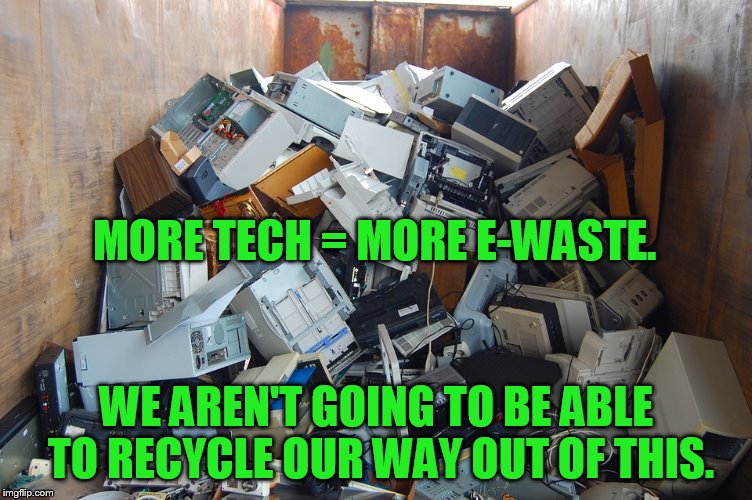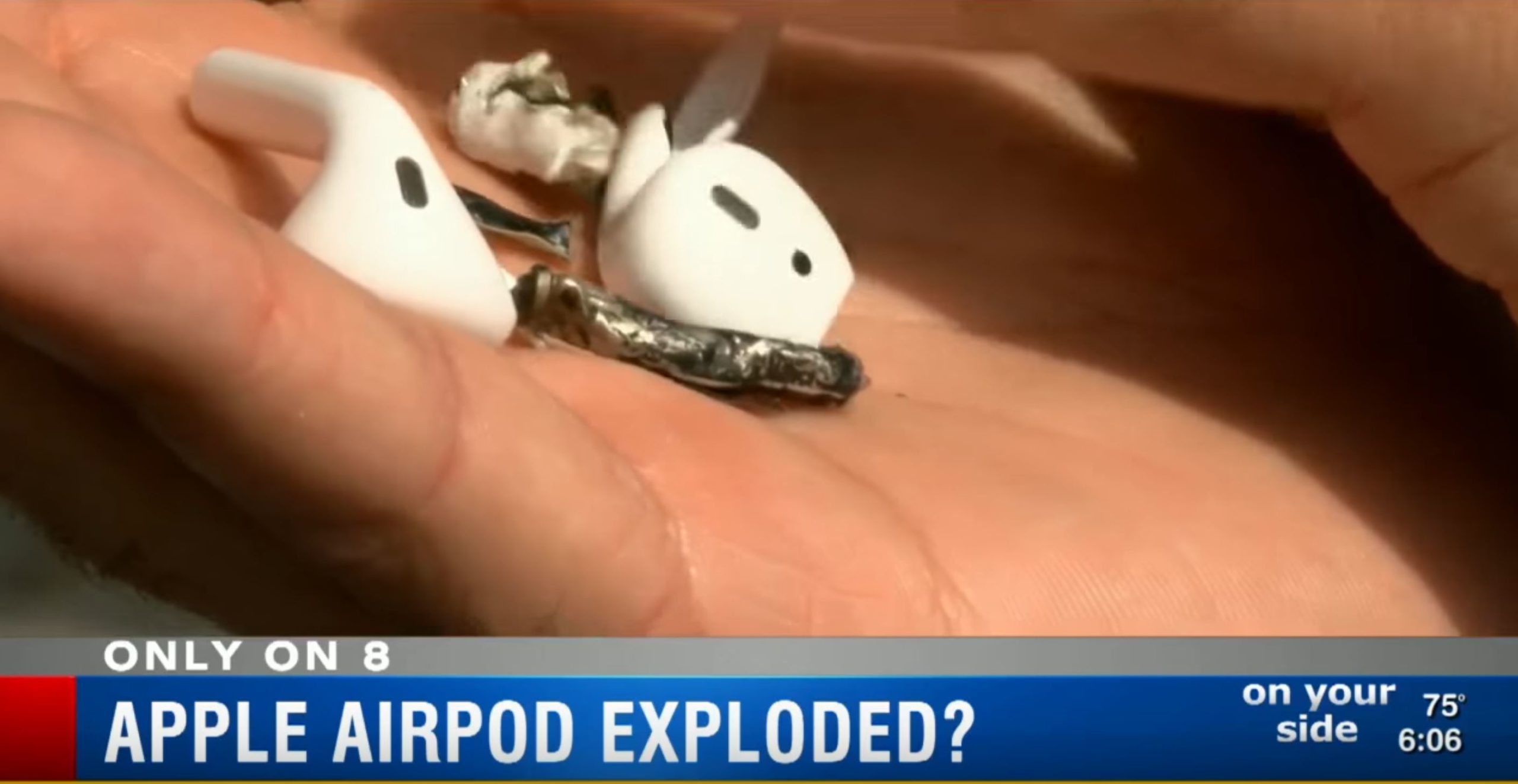 By B.N. Frank
By B.N. Frank
Mining for ingredients needed to make electronic vehicle (EV) batteries and other wireless aka “smart” devices has environmental consequences whether the mining is done on land (see 1, 2, 3, 4) or in the ocean (see 1, 2, 3). Sometimes there are humanitarian consequences too. That’s why these ingredients are often referred to as “Conflict Minerals” (see 1, 2, 3, 4, 5). Of course, there have also been countless reports about how electronic waste (aka E-Waste) from no longer useful or wanted items is ending up in landfills. Another study has confirmed that a significant amount of smaller popular devices like AirPods and cell phones are still not being recycled.
From Study Finds:
Over 5 BILLION phones will be thrown away in 2022 — enough to stretch around the equator
BRUSSELS, Belgium — More than five billion phones will be thrown away in 2022, more than enough to stretch all the way around the equator, according to a new report.
If stacked flat on top of each other, the phones would make a tower over 30,000 miles tall — 120 times higher than the orbit of the International Space Station and reaching an eighth of the way to the Moon.
Research, conducted from June to September by members of the Waste Electrical and Electronic Equipment Forum (WEEE), found that 8,775 households across six countries owned an average of 74 electrical products. These included phones, tablets, laptops, electric tools, hair dryers, and toasters.
Of these 74, on average 13 were being hoarded, nine of them were left unused, and four of them were broken. The countries surveyed included the Netherlands, United Kingdom, Slovenia, Romania, Portugal, and Lebanon.
“In 2022 alone, small EEE items such as cell phones, electric toothbrushes, toasters and cameras produced worldwide will weight an estimated total of 24.5 million tons – four times the weight of the Great Pyramid of Giza. And these small items make up a significant proportion of the 8% of all e-waste thrown into trash bins and eventually landfilled or incinerated,” says Magdalena Charytanowicz of the WEEE Forum, in charge of International E-Waste Day, in a media release.
“These devices offer many important resources that can be used in the production of new electronic devices or other equipment, such as wind turbines, electric car batteries or solar panels – all crucial for the green, digital transition to low-carbon societies.”
Why do people keep their old phones?
The survey found that mobile phones were the fourth most hoarded item despite being made of valuable recyclable materials such as gold, copper, silver, and palladium. The total global stock of mobile phones, both in use and hoarded, is around 16 billion, which is approximately two phones per person worldwide.
The reasons for hoarding these items vary. Of those surveyed, 46 percent say they think they may use them again in the future, 15 percent plan on selling them or giving them away, and 13 percent say they hold sentimental value.
A further nine percent think the item may have future value and seven percent don’t know how to dispose of them.
This issue is the focus of WEEE’s fifth annual international E-Waste Day. The team aims to encourage people to stop throwing out and hoarding their small electrical items and recycle them instead.
“We focused this year on small e-waste items because it is very easy for them to accumulate unused and unnoticed in households, or to be tossed into the ordinary garbage bin. People tend not to realize that all these seemingly insignificant items have a lot of value, and together at a global level represent massive volumes,” says Pascal Leroy, Director General of the WEEE Forum.
“The producer responsibility organizations in the WEEE Forum that manage the collection of e-waste are constantly working to make the proper disposal of small e-waste simple and convenient for users and households.”
“Providing collection boxes in supermarkets, pick up of small broken appliances upon delivery of new ones and offering PO Boxes to return small e-waste are just some of the initiatives introduced to encourage the return of these items,” Leroy adds.
E-waste is now outpacing recycling efforts
“The continuing growth in the production, consumption and disposal of electronic devices have huge environmental and climate impacts. The European Commission is addressing those with proposals and measures throughout the whole product life-cycle, starting from design until collection and proper treatment when electronics become waste,” explains Virginijus Sinkevičius, European Commissioner for the Environment, Oceans, and Fisheries.
“Moreover, preventing waste and recovering important raw materials from e-waste is crucial to avoid putting more strain on the world’s resources. Only by establishing a circular economy for electronics, the EU will continue to lead in the efforts to urgently address the fast-growing problem of e-waste.”
In the past 20 years, the WEEE Forum has collected, de-polluted, recycled, or refurbished more than 30 million tons of electrical items.
“Many small electronic products such as disposable airplane earbuds or cables and adapters accumulate largely unnoticed in many households. All the defunct earbuds accumulated by 2026 strung together would stretch around the moon three times,” notes Dr. Kees Baldé, Senior Scientific Specialist at UNITAR SCYCLE.
“Moreover, over the past decade the growth in generated e-waste has been considerably higher than the growth in recycling, thus it is important to remind people of the importance of reusing or returning every single piece of electronics or electrical product that is forgotten about in household drawers.”
What’s the world doing to help?
Last year, over 170 organizations from 78 countries worldwide supported the fourth International E-Waste Day. This year, the WEEE Forum invited all organizations involved in effective and responsible e-waste management to plan awareness raising activities on Oct. 14th.
These activities could be social media, TV, or radio campaigns, city or school e-waste collections, or even artistic performances. The UN Institute for Training and Research (UNITAR) has launched a self-paced e-waste online training course which is open to anyone who wants to get involved. The course, that goes live on Oct. 14th, will take around 90 minutes and will offer lectures, videos, illustrations, tests, and a final exam.
“International E-waste Day reminds us annually of the avalanche of problems we face unless we take appropriate measures, without which global e-waste could double to 100 million tons or more in the next 30 years. Consumption of electronics in many countries continues to grow, with more and more gadgets and products or embedded in such as furniture, clothes and toys, all of which eventually become e-waste,” concludes Dr. Ruediger Kuehr, Founder of the SCYCLE Program and Head of UNITAR’s Office in Bonn.
“We need to understand this growth and counter it with everyone involved: national authorities, enforcement agencies, Producer Responsibility Organizations, original equipment manufacturers, recyclers, researchers and consumers themselves.”
South West News Service writer Alice Clifford contributed to this report.
View StudyFinds’s article archive
Activist Post reports regularly about E-Waste as well as privacy invasive and unsafe technology. For more information, visit our archives.
Become a Patron!
Or support us at SubscribeStar
Donate cryptocurrency HERE
Subscribe to Activist Post for truth, peace, and freedom news. Follow us on SoMee, Telegram, HIVE, Flote, Minds, MeWe, Twitter, Gab, What Really Happened and GETTR.
Provide, Protect and Profit from what’s coming! Get a free issue of Counter Markets today.



Be the first to comment on "E-Waste Still Outpacing Recycling: Small Electronics Being Thrown Out with Garbage Including Est. 5+B Phones This Year Alone"